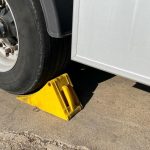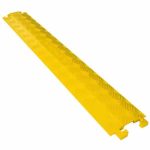Introduction
Explanation of speed bumps
Speed bumps are physical traffic calming measures that are designed to slow down vehicles. They are typically made of asphalt or concrete and are raised sections of the road that force drivers to slow down. Speed bumps are often used in areas where there are high volumes of pedestrian traffic, such as school zones, residential areas, and parking lots. While they can be effective in reducing speeds, they can also be controversial. Some people argue that they are a nuisance and can damage vehicles, while others believe that they are necessary for safety. Ultimately, the decision to install speed bumps should be based on a careful consideration of the costs and benefits.
Importance of speed bumps
Speed bumps are an important tool for traffic calming and improving safety on roads. They are particularly effective in areas with high pedestrian traffic, such as school zones and residential areas. Speed bumps force drivers to slow down, reducing the risk of accidents and making the area safer for everyone. Additionally, speed bumps can help to reduce noise pollution and improve air quality by encouraging drivers to use their brakes less frequently. While there is a cost associated with installing speed bumps, the benefits they provide in terms of safety and quality of life make them a worthwhile investment for many communities.
Purpose of the article
The purpose of this article is to explore the cost-effectiveness of installing speed bumps in residential areas. While speed bumps are often seen as a solution to speeding and reckless driving, they can also be expensive to install and maintain. This article will examine the various factors that contribute to the cost of speed bump installation, including materials, labor, and ongoing maintenance. Additionally, we will consider the potential benefits of speed bumps, such as increased safety for pedestrians and reduced traffic noise. By weighing the costs and benefits of speed bumps, we hope to provide readers with a comprehensive understanding of whether or not they are a worthwhile investment for their community.
The Cost of Installing Speed Bumps
Cost of materials
The cost of materials for installing speed bumps can vary depending on the type of speed bump chosen. The most common materials used for speed bumps are rubber, asphalt, and concrete. Rubber speed bumps are the most affordable option, with prices ranging from $50 to $150 per unit. Asphalt speed bumps are slightly more expensive, with prices ranging from $100 to $250 per unit. Concrete speed bumps are the most expensive option, with prices ranging from $200 to $500 per unit. It’s important to note that the cost of materials is just one aspect of the overall cost of installing speed bumps, as labor and installation costs must also be taken into consideration.
Cost of labor
The cost of labor for installing speed bumps can vary depending on the location and the contractor hired. In general, the cost of labor can range from $50 to $100 per hour. The installation process can take anywhere from a few hours to a few days, depending on the number of speed bumps being installed and the complexity of the project. It is important to factor in the cost of labor when considering the overall cost of installing speed bumps, as it can significantly impact the final cost. However, the benefits of installing speed bumps, such as increased safety and reduced speed, may outweigh the cost of labor in the long run.
Cost of maintenance
While speed bumps may seem like a one-time expense, they do require ongoing maintenance to remain effective and safe. Over time, the bumps can become worn down or damaged, requiring repairs or replacement. Additionally, regular cleaning and repainting may be necessary to ensure visibility and prevent accidents. The cost of maintenance will vary depending on the size and number of speed bumps, as well as the frequency of upkeep. However, it is important to factor in these ongoing expenses when considering the overall cost and effectiveness of installing speed bumps.
Comparison of costs with other traffic calming measures
When it comes to traffic calming measures, speed bumps are just one option. Other options include roundabouts, chicanes, and speed humps. The cost of these measures can vary depending on the location and the specific design. Roundabouts, for example, can cost anywhere from $100,000 to $500,000 to install. Chicanes, which are designed to slow down traffic by creating a zigzag pattern, can cost between $10,000 and $50,000. Speed humps, which are similar to speed bumps but longer and flatter, can cost between $2,000 and $5,000 per hump. While speed bumps may be a more affordable option, it’s important to consider all of the available options and their respective costs before making a decision.
Benefits of Installing Speed Bumps
Reduction in speed-related accidents
One of the primary reasons why speed bumps are installed is to reduce speed-related accidents. These accidents can be fatal and can cause severe injuries to pedestrians and drivers alike. Speed bumps force drivers to slow down, making it easier for them to react to unexpected situations. Studies have shown that the installation of speed bumps can reduce the number of speed-related accidents by up to 50%. This reduction in accidents not only saves lives but also reduces the cost of medical treatment and insurance claims. Therefore, the installation of speed bumps can be considered a worthwhile investment in terms of public safety.
Improved pedestrian safety
One of the main benefits of installing speed bumps is the improvement in pedestrian safety. Speeding vehicles pose a significant threat to pedestrians, especially in residential areas and near schools. By slowing down traffic, speed bumps can reduce the risk of accidents and injuries to pedestrians. This is particularly important for children and elderly individuals who may have difficulty crossing the road quickly. In addition, speed bumps can encourage drivers to be more aware of their surroundings and to drive more cautiously, which can further enhance pedestrian safety. Overall, the installation of speed bumps can be a valuable investment in improving the safety of pedestrians in a community.
Reduced noise pollution
Speed bumps not only slow down traffic but also reduce noise pollution. Vehicles that speed on roads create a lot of noise, which can be a nuisance for residents living nearby. Installing speed bumps can help reduce the noise levels by forcing drivers to slow down, resulting in less noise from engines and tires. This can lead to a more peaceful and quieter environment for residents, making it a worthwhile investment for communities looking to improve their quality of life. Additionally, reduced noise pollution can have positive impacts on mental health, as excessive noise can lead to stress and anxiety.
Positive impact on property values
Speed bumps not only help to reduce speeding and improve safety on roads, but they can also have a positive impact on property values. According to a study by the National Association of Home Builders, traffic calming measures such as speed bumps can increase property values by up to 10%. This is because they make the neighborhood safer and more desirable for families with children and those who value a quieter, more peaceful environment. Additionally, the presence of speed bumps can signal to potential buyers that the community is proactive about safety and takes measures to protect its residents. Overall, the installation of speed bumps can be a worthwhile investment for both safety and property value reasons.
Drawbacks of Installing Speed Bumps
Increased travel time
One of the main concerns with installing speed bumps is the potential increase in travel time for drivers. Speed bumps force drivers to slow down, which can be frustrating for those who are in a hurry. However, studies have shown that the increase in travel time is typically minimal, with most drivers only experiencing a delay of a few seconds. Additionally, the benefits of speed bumps, such as increased safety for pedestrians and reduced speeding, outweigh the slight inconvenience of a slightly longer commute.
Potential damage to vehicles
While speed bumps are meant to slow down drivers and improve safety, they can also cause potential damage to vehicles. The repeated impact of driving over speed bumps can lead to wear and tear on a car’s suspension system, tires, and wheels. In some cases, drivers may even experience damage to their exhaust system or undercarriage. This can result in costly repairs for vehicle owners and may discourage them from using certain roads or parking lots with speed bumps. It’s important for municipalities and property owners to consider the potential damage to vehicles when deciding whether or not to install speed bumps.
Negative impact on emergency response times
One major concern with installing speed bumps is the potential negative impact on emergency response times. Speed bumps can slow down emergency vehicles, such as ambulances and fire trucks, which can be detrimental in life-threatening situations. In some cases, emergency responders may need to take alternate routes or remove the speed bumps altogether to ensure timely arrival at the scene. This can result in additional costs and delays in emergency response times, which can have serious consequences. Therefore, it is important to carefully consider the placement and design of speed bumps to minimize their impact on emergency response times.
Possible increase in cut-through traffic
While speed bumps can effectively reduce speeding and improve safety in residential areas, they may also lead to an increase in cut-through traffic. Drivers who are frustrated with the slower speed limits on roads with speed bumps may seek alternative routes to avoid them, which can result in more traffic on previously quiet streets. This can be particularly problematic for neighborhoods that are not equipped to handle high volumes of traffic, as it can lead to congestion, noise pollution, and safety concerns for pedestrians and cyclists. Therefore, it is important for local authorities to carefully consider the potential impact of speed bumps on traffic patterns before installing them.
Factors to Consider Before Installing Speed Bumps
Traffic volume and speed
Traffic volume and speed are two important factors to consider when deciding whether or not to install speed bumps. If a road has high traffic volume and high speeds, speed bumps may be necessary to slow down drivers and improve safety. However, if the road has low traffic volume or low speeds, speed bumps may not be as effective and could even cause unnecessary wear and tear on vehicles. It is important to conduct a thorough analysis of traffic patterns and speeds before making a decision on whether or not to install speed bumps.
Road design and layout
Road design and layout play a crucial role in determining the effectiveness of speed bumps. The placement and spacing of speed bumps should be carefully considered to ensure they do not impede emergency vehicles or cause discomfort to drivers. Additionally, the height and width of speed bumps should be appropriate for the speed limit of the road. Poorly designed speed bumps can lead to increased wear and tear on vehicles, noise pollution, and decreased safety for pedestrians and cyclists. Therefore, it is important to consult with traffic engineers and conduct thorough studies before installing speed bumps on any road.
Community support
Community support is a crucial factor when it comes to installing speed bumps. It is important to involve the local community in the decision-making process and gather their opinions and feedback. This can be done through community meetings, surveys, or online forums. When the community is supportive of the installation of speed bumps, it can lead to a smoother implementation process and a higher likelihood of compliance with the new traffic measures. Additionally, community support can help to ensure that the speed bumps are maintained and kept in good condition over time.
Availability of alternative traffic calming measures
While speed bumps are a popular traffic calming measure, there are alternative options available that may be more suitable for certain areas. For example, roundabouts can be effective in reducing speed and improving traffic flow in intersections. Chicanes, which are a series of alternating curves in the road, can also slow down drivers without the need for a physical obstacle. Additionally, road diets, which involve reducing the number of lanes on a road, can create a safer environment for pedestrians and cyclists. It’s important for local authorities to consider all available options and choose the most appropriate measure for each specific location.
Conclusion
Summary of key points
In summary, installing speed bumps can be a costly endeavor, with estimates ranging from $2,000 to $10,000 per bump. However, the benefits of reducing speeding and increasing safety for pedestrians and drivers may outweigh the initial cost. It is important to consider the specific needs and circumstances of each location before deciding whether or not to install speed bumps. Additionally, alternative traffic calming measures such as roundabouts and chicanes may be more effective and cost-efficient in certain situations. Ultimately, the decision to install speed bumps should be made with careful consideration and consultation with traffic experts and community members.
Recommendations for decision-makers
Based on the analysis of the costs and benefits of installing speed bumps, decision-makers should consider several recommendations before making a final decision. Firstly, it is important to conduct a thorough analysis of the traffic flow and accident data in the area to determine if speed bumps are necessary. Secondly, decision-makers should consider alternative traffic calming measures, such as roundabouts or chicanes, which may be more effective and cost-efficient. Finally, it is recommended that decision-makers consult with community members and stakeholders to ensure that the installation of speed bumps aligns with their needs and preferences. By following these recommendations, decision-makers can make informed decisions that prioritize safety and cost-effectiveness.
Final thoughts
In conclusion, installing speed bumps can be a costly and time-consuming process. However, the benefits of reducing speeding and increasing safety for pedestrians and drivers may outweigh the initial expenses. It is important to carefully consider the location and design of speed bumps to ensure they are effective and do not cause unnecessary inconvenience for residents. Ultimately, the decision to install speed bumps should be based on a thorough analysis of the specific needs and circumstances of the community.






